A selection of films, artefacts and documents from the NFSA collection showcase the life of Britain’s longest reigning monarch, Her Majesty Queen Elizabeth II (1926–2022).

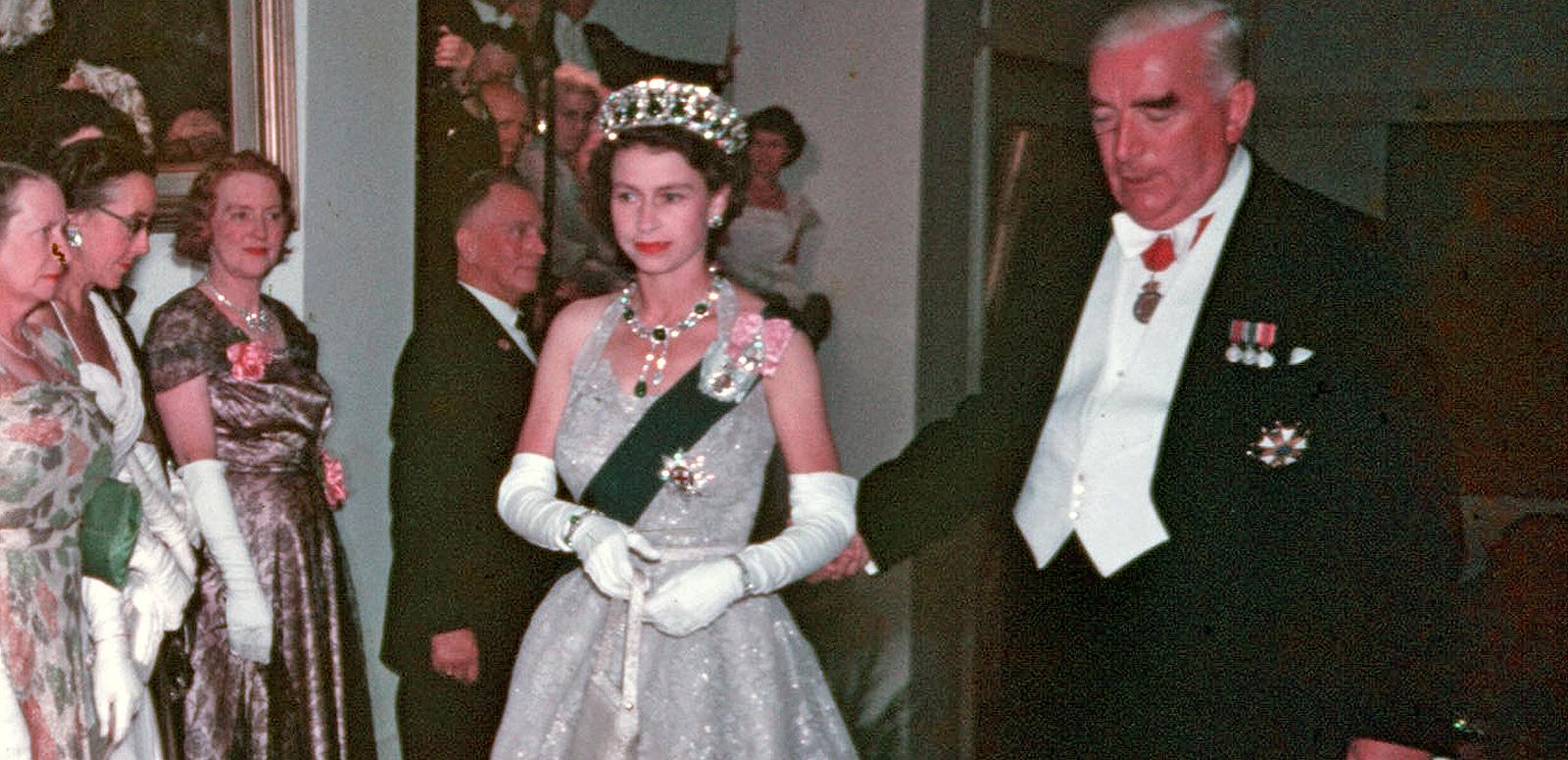
A selection of films, artefacts and documents from the NFSA collection showcase the life of Britain’s longest reigning monarch, Her Majesty Queen Elizabeth II (1926–2022).
Born on 21 April 1926, as third in line to the throne, Princess Elizabeth did not expect to become monarch. It was following the abdication of her uncle King Edward VIII in 1936, and the ascent of her father King George VI, that she was catapulted into the public eye and a life of service.
In the following clip from the 1947 film Heir to the Throne, Princess Elizabeth made her most famous pledge, which still rings true today: ‘I declare before you all that my whole life, whether it be long or short, shall be devoted to your service and the service of our great imperial family to which we all belong’:
Princess Elizabeth in South Africa on her 21st birthday. Heir to the Throne (British Movietone News, 1947). NFSA title: 11107
Written by Dermot Morrah, a journalist for The Times and royal correspondent, Princess Elizabeth delivered the speech on her 21st birthday while she was on a 3-month tour of Southern Africa with her parents, King George VI and Queen Elizabeth, and sister Princess Margaret.
While seated in the grounds of Government House (now known as Tuynhuys), in the shadow of Table Mountain in Cape Town, the young princess used the medium of radio and film to confidently communicate to her future subjects that the priority of her future reign would be service to her country and the Commonwealth.
One could argue that the Queen has kept this promise tenfold. During her reign she has been patron of over 600 organisations and charities, attended thousands of official engagements and toured every country in the Commonwealth.
Following the premature death of her father King George VI on 6 February 1952, Princess Elizabeth acceded to the throne while abroad in Kenya with her husband Prince Philip.
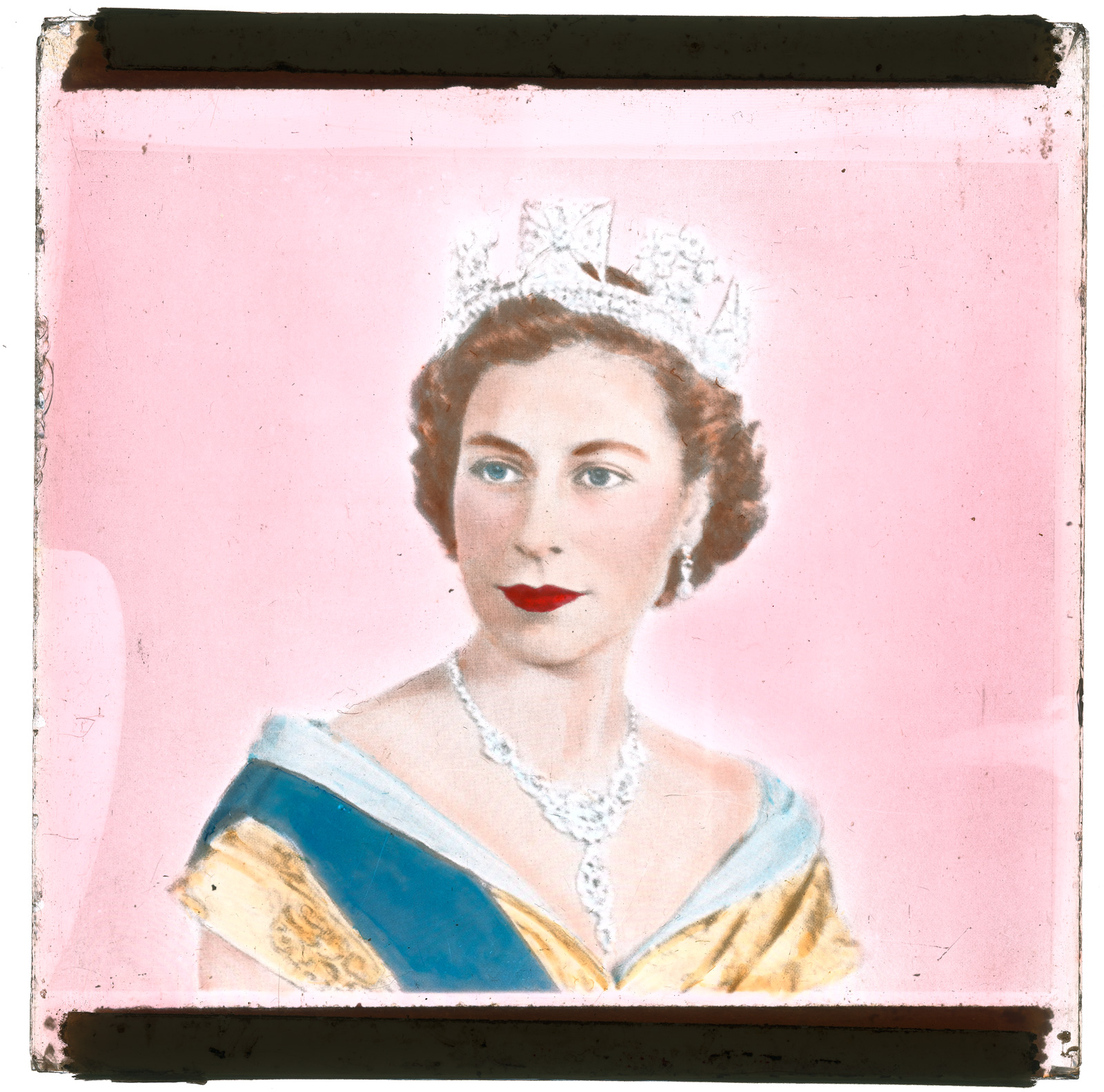
This hand-coloured glass cinema slide shows the Queen in one of her first official portraits, as taken by society photographer Dorothy Wilding. She is wearing the Diamond Diadem, a necklace gifted to her as a wedding present by the Nizam of Hyderabad, and finished with a brocade gown designed by couturier Norman Hartnell. Hartnell created her wedding dress and would eventually design her coronation dress.
The image presents the Queen as elegant and refined, yet fresh and youthful; the fitting monarch for a postwar age. The slide was shown prior to film screenings as one of the many ways the Queen made her image accessible to her subjects across the Commonwealth.
After a period of mourning and months of preparation, the Queen was crowned on 2 June 1953 at Westminster Abbey in a solemn yet ornate ceremony.
In attendance was Australian Prime Minister Robert Menzies who captured this 16mm colour footage of the ceremony:
Coronation of Her Majesty, Queen Elizabeth II, on 2 June 1953. Our Coronation Tour (Sir Robert Menzies, 1953). Courtesy: Heather Henderson. NFSA title: 5208
At the insistence of the Queen, the coronation was televised for the first time, with an estimated global audience of 277 million. While television had not yet been launched in Australia, royal watchers flocked to cinemas to view full-length films and newsreels of the event.
Those unable to attend the coronation either at Westminster Abbey or in London, could purchase souvenirs like this film-strip viewer:
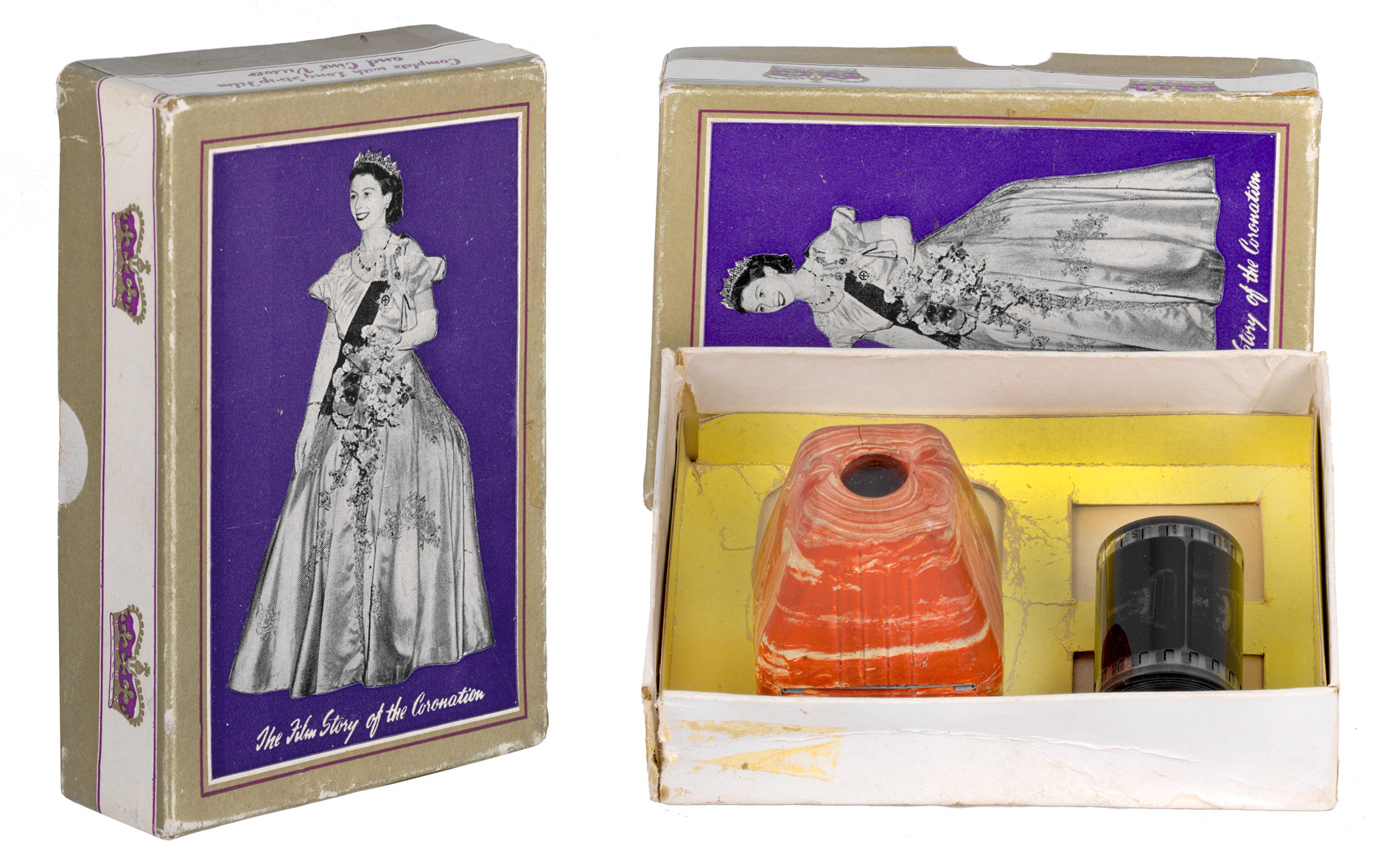
Box containing film of the coronation of Queen Elizabeth II and hand-held cine viewer. The Film Story of the Coronation (1953). NFSA title: 1668660
Closer to home, celebrations were held across Australia to mark the coronation. Shown in this Cinesound newsreel are children, resplendent in carefully constructed replica gowns, re-enacting the coronation in the grounds of their school:
Schoolchildren celebrate the coronation of Her Majesty Queen Elizabeth II. Cinesound Productions, 29 May 1953. NFSA title: 121253
Eleven-year-old Kay Hogden of Fort Street Public School in Sydney can also be seen confidently reciting her speech, the recording of which was promptly flown to London and broadcast on the BBC before the coronation began.
See more documents relating to the coronation in the image gallery below (click each image to enlarge):
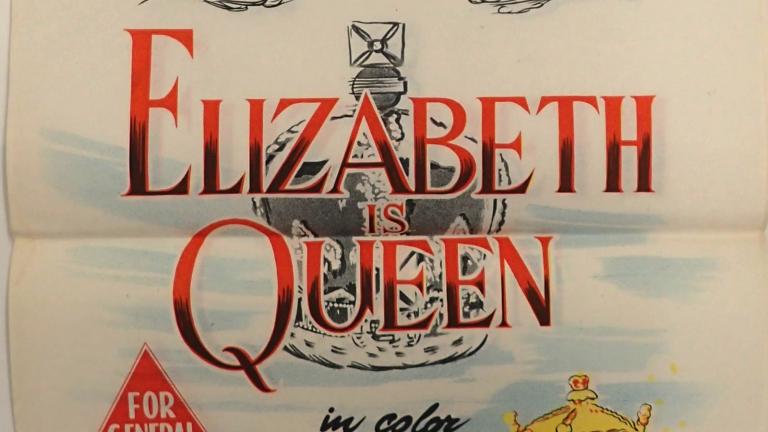
Daybill poster for Australian release of the film Elizabeth is Queen (British Pathé, 1953), documenting the coronation. Given the signifcance of the occasion, this tri-fold poster is a remarkably simple design that almost seems rushed. The sepia photo of the Queen sits somewhat uncomfortably with a richly coloured illustraton at the bottom. NFSA title: 1649374

Souvenir box for a 16mm copy of Elizabeth is Queen (British Pathé, 1953). This elegant design announces 'Elizabeth is Queen' in exquisite typeface above a delightful colour silk image of the Queen. NFSA title: 1669851
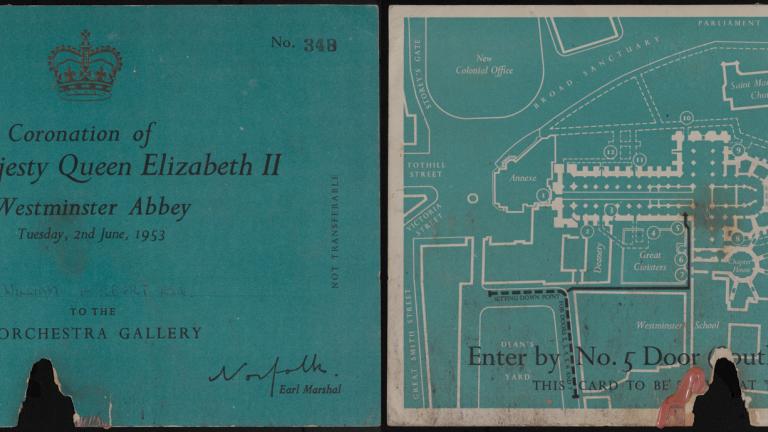
Invitation for Melbourne-born tenor William Herbert to attend the coronation, as a member of the choir. The invitation reads: 'Coronation of Her Majesty Queen Elizabeth II, Westminster Abbey, Tuesday, 2nd June, 1953. Admit Willam Herbert Esq to the Orchestra Gallery'. The invitation has a plan of Westminster Abbey on the reverse. It's informative and unadorned, perfectly serving its intended purpose. NFSA title: 457331
In 1954, Queen Elizabeth and husband Prince Philip made their first tour of Australia, becoming the first reigning monarch to visit. Her interest and commitment to Australia was shown through 15 subsequent visits, her most recent in 2011.
These royal tours, and those undertaken by her children and grandchildren, have been captured on home movies, newsreels, radio and television news broadcasts and full-length feature films.
For more footage from these tours, visit the Queen in Australia and Royal Family in Australia curated collections.
Main image: Her Majesty Queen Elizabeth and Prime Minister Robert Menzies at a state ball at Parliament House in Canberra, 17 February 1954. NFSA title: 1629558.
The National Film and Sound Archive of Australia acknowledges Australia’s Aboriginal and Torres Strait Islander peoples as the Traditional Custodians of the land on which we work and live and gives respect to their Elders both past and present.